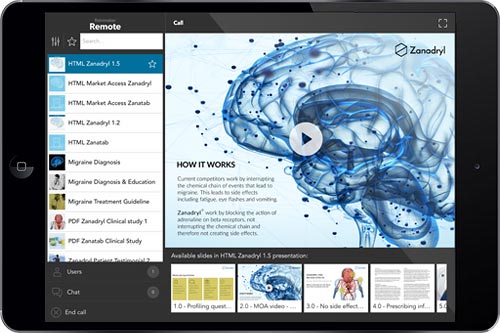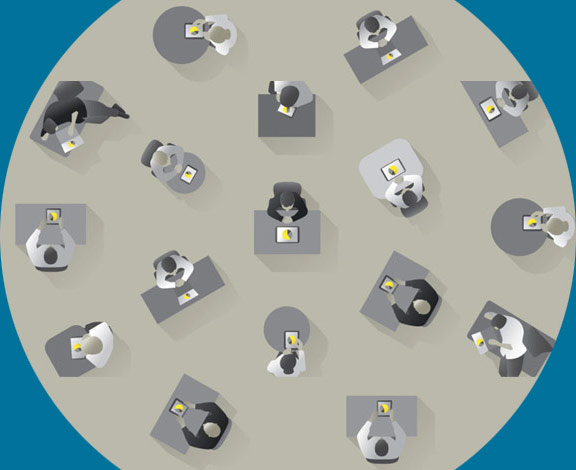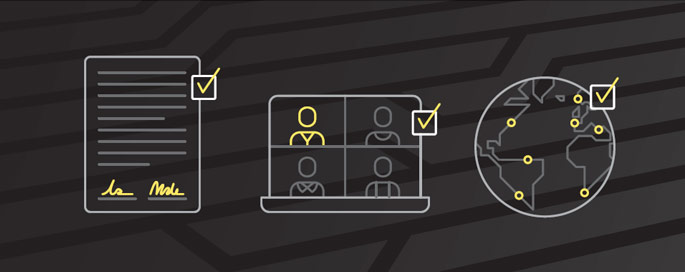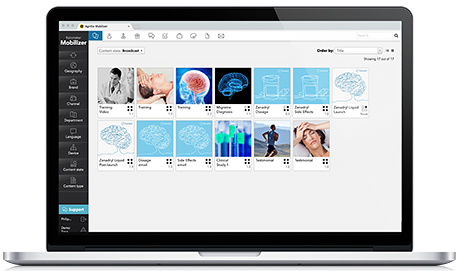Interview with Agnitio CTO:
How new remote engagement practices are impacting pharma IT

IT has always had a say in which digital communication technologies to get, but technology experts have become central to business decisions in the life sciences. And IT professionals have been very much in focus with the overnight shift from in-person communications to virtual engagements due to COVID-19 restrictions.
To take the pulse on what’s happening right now, we interviewed Agnitio’s own IT expert, VP of Technology, Martin Frederiksen, on how his colleagues throughout pharma IT are responding.
How have you experienced the transition to remote engagement? How is it affecting IT departments?
Most IT executives were well-used to using systems like Slack, Skype, and Hangout in their daily work, so the impact isn’t really being felt there. Our development teams, for example, have been working remotely the majority of the time during the pandemic and things are even more efficient, if anything.
The real change has been enabling others to make use of these technologies. With COVID, there was a very pressing challenge to get remote engagement software in place to meet the sudden lack of access to healthcare professionals.
This was a huge shift, with little time to make it happen. That said, the speed with which many companies found solutions to the immediate problem has been impressive. Very quickly they enabled sales teams to use standard video conferencing systems like Zoom and Teams, if there wasn’t a specialized life-sciences system already in place – like our own Rainmaker Remote solution.
Consumer and standard enterprise solutions
 Zoom |
 Skype |
 Microsoft Teams |
 Cisco Webex |
 Google Meet |
 Bluejeans |
 GoToMeeting |
 Facebook Messenger |
 Slack |
 WharsApp |
What’s their next step?
What we’re experiencing is that the companies that found quick-fixes to the immediate problem of lack of access – Zoom, Skype, Teams – are now looking for more permanent solutions that better meet the industry’s needs. That means systems that can answer issues like compliance, security and content control. They are also looking for specific functionality like ordering samples or patient literature, which is missing from standard software. And they want their remote solution to be part of a system to meet HCPs’ expectations for connected experiences.

- Martin Frederiksen, Agnitio CTO
What’s the issue with compliance and remote technology?
Before COVID19, most pharma companies were really focused on controlling all customer engagements and being compliant. We had clear standards for how to develop and make use of content for their reps. But with ‘off the shelf’ video conferencing and meeting systems there’s not the same control.
We’ve probably all been on an online meeting where family members were running around in the background, or someone has been sharing their screen with their personal emails, or a wrong presentation opened up. These are all compliance issues.
What IT professionals in pharma want, especially those in the commercial IT functions, is the functionality and benefits of e-detailing – content control, interactive content, data capture – but for remote engagement. So, it’s the flexibility of remote engagement with the well-established standards from digital-enabled F2F meetings.
Are there any positives from pharma’s recent experience with remote technologies?
Lots, I believe. There was a recent eyeforpharma survey which showed that HCPs responded to the switch to remote more positively than was expected. That likely means that we’re not going to go back to exactly how we worked before, which is a good thing because these technologies have real benefits for pharma and HCPs.
Speaking for Agnitio, we’ve also been inspired by how companies used the standard remote solutions. Many people have shown real skill in using these technologies. Video, for example, clearly provides a personal touch to remote meetings. And it has actually informed our development work. Keeping communications controlled while providing freedom and enabling personalization shot to the top of our R&D priority list. And it will be coming very soon.
- Martin Frederiksen, Agnitio CTO
What’s key when selecting remote technologies?
This is something that pharma IT professionals know very well. You have to understand who the users are and be really clear on their needs. And then you have to understand what the different technologies and solutions do well and in which situations they perform best.
A telephone is a remote technology and it’s great for keeping people in touch. But it’s pretty poor as a presentation tool. So, if you’re hearing from reps that they don’t need a specialized remote detailing solution and a phone works fine, they probably aren’t doing any presentations to HCPs, but they are staying in touch. Is that enough? If not, there’s a clear need to apply the right technology and do some change management work to ensure that reps understand the objectives.
Understanding remote technologies
Read our recent blog post that highlights the advantages of different types of virtual engagement


What does IT need to consider when it comes to data and integrations for remote solutions?
In an ideal world, all engagements would be connected. An HCP’s activities in marketing channels, such as web visits, marketing emails, social media engagement, would be linked with activities in sales-driven channels, such as F2F, e-detailing, remote meetings, approved emails etc. There would be a single view of every customer.
Unfortunately, that’s often lacking right now. There generally isn’t a single data model like this. Rather we have data silos and often complex CRM set-ups in which different markets have different systems. That’s why we designed our solution, Rainmaker, to be platform agnostic. It will provide data to whatever CRM you have in any market.

- Martin Frederiksen, Agnitio CTO
How do you see your role as an IT leader transforming?
In the old days, IT was a support function that was kind of living its own life. It wasn’t very visible. That’s not true anymore. All businesses are IT businesses, no matter what sector they operate in. That makes the IT professional central to any company’s operations.
What this means is that now IT leaders need to consider wider business impacts and not just issues around technology. Increasingly, IT specialists need a commercial mindset. We have to help our colleagues define the problems that technology should be solving, be more customer focused, anticipate issues, and work closely with them to ensure that implementation happens smoothly. This is all happening.
What does the future of digital sales engagement look like?
One big trend is content flexibility and modularity. We expect to see companies taking more of a modular approach to developing materials and content. For example, reps will pick relevant materials for a remote meeting that suits a specific HCP’s needs and interests. That requires a flexible system – providing sales teams with options – but also one that maintains control and transparency of content, which is essential for compliance. It also requires a great data system so that reps can make these decisions in an informed way.
On the other side of the equation, HCPs want to access personalized materials on-demand. There’s a lot of talk about on-demand content but of you ask a medical professional, it’s not there yet. That will change.
More on IT and digital sales empowerment
Download our ‘cheat sheet’ which provides 14 essential questions every CIO must ask when choosing digital technology


What needs to change to make this happen?
From an IT perspective, it’s about getting the systems in place that can do this – and working with developers and solution providers to think bigger. Something we’re investing in at Agnitio, and the wider Bigtincan organization that we’re part of, for example, is sales enablement technologies that provide recommendations and predictions on what kind of support, information and training the individual physician needs.
That said, I also think that we should be more agile in the development and application of new technologies. We need a long-term vision but also more immediate action. COVID-19 made it clear that there’s a lot to learn from tactical projects. If you can get going, things can improve rapidly.
Often our most successful pharma partners rolled out new tools and practices in stages – starting in one region or market to get experience and build best-practices, and then scaling.
- Martin Frederiksen, Agnitio CTO
Any final piece of advice?
Not doing anything might feel like playing it safe but it’s actually riskier than acting. COVID-19 made it clear how the companies who had already invested in remote solutions had a major advantage when the situation changed. While many companies are still scrambling to get the right solution in place, others are reaping the rewards. This should tell us to be prepared.
I’d also highlight the massive opportunity of data and connecting channels together. Just take HCP webinars which have been widely run during lockdown but are being used as one-off events. There’s low audience interaction so there’s little data. And where’s the customer experience? What do HCPs do next?


For that reason, we’re encouraging our clients to create mini-journeys around webinars by connecting other channels. If HCPs can move from a webinar to a series of remote group presentations on specific topics, on-demand channels like websites, or a one-to-one remote detailing presentation, the experience gets so much better – and you start getting useful data.
Generally, I believe that we in IT can take more ownership of structuring the data, so it becomes more actionable and useful. Pharma needs to build a better data culture and IT is well-positioned to make that happen.
Martin Frederiksen
Martin is VP of Development and Operations and has been with Agnitio for eight years.
He works closely with customers and partners to ensure that Agnitio’s solutions are meeting customer needs.
If you’re interested in a chat with Martin, please let us know.




